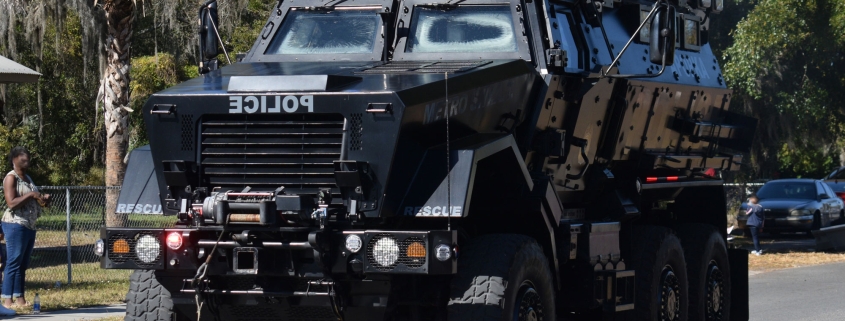Armored Vehicles and Disaster Response
In the wake of natural disasters, political unrest, or large-scale emergencies, the need for reliable and secure transportation becomes paramount. Armored vehicles, traditionally associated with military or high-security operations, are increasingly playing a vital role in disaster response efforts around the globe. These robust vehicles are uniquely suited to operate in hostile and unstable environments, providing protection, mobility, and support when it is needed most.
The Role of Armored Vehicles in Disaster Zones
Disaster zones are often characterized by chaos, uncertainty, and compromised infrastructure. Roads may be destroyed, communication networks may be down, and the risk of violence or looting can be high. Armored vehicles excel in such conditions, offering:
- Safe Transportation of Aid Workers and Supplies: Humanitarian organizations rely on armored vehicles to transport personnel and critical supplies, such as food, water, and medical aid, into areas where safety is a concern.
- Evacuation of Vulnerable Populations: Armored vehicles can evacuate individuals from dangerous situations, including injured civilians, the elderly, and children, ensuring their safe passage to shelters or medical facilities.
- Protection Against Threats: In areas where civil unrest or armed conflicts coincide with disaster zones, armored vehicles provide a secure environment for responders and those being assisted.
- Maintaining Access in Challenging Terrain: Designed for durability and off-road capabilities, these vehicles can navigate through flooded streets, debris-filled roads, or unstable terrain where traditional vehicles might fail.
Key Features That Make Armored Vehicles Essential
Armored vehicles used in disaster response are equipped with advanced features that make them ideal for challenging and dangerous situations. These include:
- Reinforced Armor: Protecting occupants from ballistic threats and physical impacts, such as falling debris.
- All-Terrain Capabilities: High-performance suspension systems and durable tires allow vehicles to traverse difficult landscapes.
- Advanced Communication Systems: Satellite phones, radios, and other tools ensure constant communication even in areas with no cellular coverage.
- Climate Control Systems: Necessary for operating in extreme weather conditions, from freezing cold to intense heat.
- Storage Capacity: Designed to carry large amounts of supplies, from medical kits to emergency rations.
Applications in Different Types of Disasters
Armored vehicles can be adapted to meet the demands of various disaster scenarios:
- Natural Disasters:
- In the aftermath of hurricanes, earthquakes, or floods, armored vehicles can navigate hazardous environments to deliver aid and rescue stranded civilians.
- Their durability allows them to operate in areas with downed power lines, fallen trees, or collapsed infrastructure.
- Health Crises:
- During pandemics or disease outbreaks, armored vehicles can transport medical personnel, vaccines, and equipment to remote or high-risk areas while ensuring security.
- Mobile health clinics can be outfitted in armored vehicles, providing a safe and sterile environment for treatment.
- Conflict-Driven Disasters:
- In war-torn regions or areas affected by civil unrest, armored vehicles protect aid workers from violence while ensuring the delivery of humanitarian assistance.
- These vehicles often act as mobile command centers for coordinating relief efforts in high-risk zones.
- Industrial Accidents and Hazards:
- Armored vehicles equipped with specialized features, such as chemical or radiation shielding, can be used to respond to industrial disasters or hazardous material spills.
Case Studies: Armored Vehicles in Action
- Syria’s Humanitarian Crisis: Armored vehicles have been used by aid organizations to deliver food, medical supplies, and shelter kits to civilians in conflict zones, navigating through dangerous areas under constant threat.
- Hurricane Relief in the Caribbean: Following hurricanes Irma and Maria, armored vehicles played a key role in reaching remote communities cut off by flooding and debris, ensuring the timely delivery of aid.
- Ebola Outbreak in West Africa: During the Ebola epidemic, armored vehicles transported healthcare workers and medical supplies to areas experiencing both health crises and civil unrest, ensuring safety for those on the front lines.
Challenges and Limitations
While armored vehicles are invaluable in disaster response, they are not without challenges:
- High Costs: The acquisition and maintenance of armored vehicles can be expensive, limiting their availability for smaller organizations.
- Logistical Issues: Their size and weight may pose challenges in areas with fragile infrastructure or narrow roads.
- Specialized Training: Operating armored vehicles requires trained personnel to ensure safety and effectiveness.
The Future of Armored Vehicles in Disaster Response
As technology advances, armored vehicles are becoming more versatile and efficient. Innovations such as lightweight composite armor, autonomous driving capabilities, and integrated AI systems will enhance their performance in disaster zones. Furthermore, the development of electric or hybrid armored vehicles could reduce their environmental impact and operating costs, making them more accessible to a wider range of organizations.
Collaboration between governments, NGOs, and private manufacturers will be critical in expanding the deployment of armored vehicles for disaster response. By investing in these versatile tools, we can ensure that aid reaches those in need, no matter how dire the circumstances.
Armored vehicles are no longer confined to the battlefield; they have become essential tools in disaster response and humanitarian aid. Their ability to provide safety, mobility, and resilience in high-risk environments makes them indispensable in saving lives and supporting recovery efforts. As the challenges of the modern world continue to evolve, so too will the role of armored vehicles, ensuring that they remain at the forefront of disaster response strategies.




Leave a Reply
Want to join the discussion?Feel free to contribute!